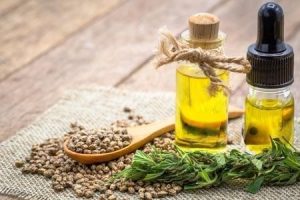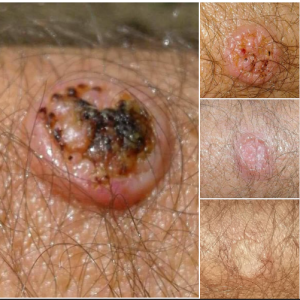Investigating the Healing Potential of Whole Plant Cannabis Extracts

Introduction
The cannabis industry is missing the mark by focusing on isolates rather than whole plant extracts. Before the discovery of cannabinoids, the endocannabinoid system, and their receptors, people who utilized cannabis focused on the combined effect of whole plant extracts.
Ancient cannabis medicine consisted of brews, poultices, smoking, and rudimentary extraction.
While these methods may seem primitive, it seems our ancestors had it right from the start.
Throughout history cannabis was a remedy for stomach upset, wound healing, anxiety, menstrual cramps and skin infections, as well as an entheogen.
Cannabis medicine began with whole-plant extracts. This only changed with the advent of modern chemistry. Scientists thought that by isolating specific cannabis compounds, they could improve their activities at the receptors to enhance their effects. But perhaps this approach came about with an air of academic pretense.
Disrupting the natural balance of phytocannabinoids through extraction, synthesis, and artificial selection has actually impeded the progress of cannabis medicine. Now we know that cannabis isolates show far less therapeutic potential than their whole-plant counterparts. Experimentation has also given rise to synthetic cannabinoids which are responsible for morbidity and mortality otherwise unknown to cannabis use.
Nevertheless science continues to confirm cannabis as one of nature’s true wonders.
While a single cannabinoid is effective on its own, it appears early research underestimated the synergy that has evolved between plant-based cannabinoids and those of the mammalian brain (endocannabinoids). Today more research shows that cannabinoids, terpenes, and flavonoids have greater therapeutic value when taken together as they exist in the plant.
Advancing cannabis medicine will depend on challenging popular opinions among scientists and consumers.
“Cannabis medicine is far too complex to be defined by THC.”
It was always inevitable that THC would dominate cannabis research, at least to start.
Marijuana’s psychedelic effects have captivated the human mind before the dawn of civilization.
This remains true today, and unfortunately the cannabis industry continues to influence research. While it may seem discouraging that science has bent to commercial interests, much progress has been made. Now for the first time in recorded history we may have the understanding to realize the full potential of cannabis as a medicine.
First we need to realize that cannabis is far more than THC. The idea that THC is the most important cannabinoid is dangerous. Cannabis dependence, and the harm from abuse almost exclusively stem from THC. Consuming and manufacturing cannabis around THC content can negate the plant’s medicinal value. This is true for both medicinal and recreational use.
More THC doesn’t mean a better high, and less is truly more with marijuana.
Cannabis medicine is far too complex to be defined by THC. It may be counterintuitive but higher THC levels don’t necessarily enhance recreational marijuana, much less its therapeutic effects.
Research studies have revealed over 150 cannabinoids, each displaying unique interactions and effects on cannabinoid receptors. Other contributing phytochemicals in cannabis include flavonoids, terpenes, and complex sugars.
This article aims to give cannabis users and clinicians information to maximize its astounding potential as a medicine.
The Science behind Whole Plant Cannabis Extracts and the entourage effect
The entourage effect
We’ve briefly covered the concept of the entourage effect, a cornerstone of cannabis medicine.
The concept is simple: cannabis compounds work better together.
During metabolism, cannabis-based compounds modulate the activities of other cannabinoids, especially THC. Thus it takes the right balance of cannabinoids, flavonoids, and terpenes to optimize receptor activity.
This entourage effect was first introduced in the work of Raphael Mechoulam and Shimon Ben-Shabat.
We’ll briefly outline some of the broad interaction that describe this concept:
- Endocannabinoids and phytocannabinoids
The entourage effect depends on the synergy between endocannabinoids and phytocannabinoids, as well combinations of different compounds of a single category (e.g.- endocannabinoids with endocannabinoids). Plant-based, or phytocannabinoids, mimic the activity of endocannabinoids, which are naturally present in the brain, along with specialized cannabinoid receptors. The mimetic activity of phytocannabinoids, when introduced to the body’s native cannabinoids (endocannabinoids) and their network of receptors (the endocannabinoid system), is the essence of cannabis medicine.
Aside from THC, which is harmful when abused, research suggests that cannabis compounds can treat a huge spectrum of disease with virtually no risk or side effects.
- Phytocannabinoids and other phytocannabinoids
This explains the interaction between cannabinoids when administered together or taken in whole plant extracts. This is mostly described as the modulatory activity of cannabinoids like CBD on psychotropic cannabinoids like THC. Aside from this, the entourage effect between phytocannabinoids was also reported to promote interaction at receptors where one cannabinoid will open a binding pocket for another cannabinoid. This explains why whole plant extracts offer greater pain reduction, since they affect several receptors.
- Phytocannabinoids, endocannabinoids, and terpenes
Terpenes are aromatic compounds found in many plants which have therapeutic properties in their own rite. They also play a critical role in cannabis medicine by binding to cannabinoid receptors. Studies have shown that even the terpenes that don’t interact with cannabinoid receptors still increase the activity of other cannabinoids.
Cannabinoids and terpenes + flavonoids.
Flavonoids are phytochemicals with anticancer, antiviral, and anti-inflammatory properties (among others). Until recently flavonoids have been largely ignored due to their relatively low concentration in cannabis plants. However, emerging research shows notable promise for several cannabis-based flavonoids, like cannflavin A, B. The presence of these flavonoids increases the anti-inflammatory and antioxidant effects that result from the synergy of phytocannabinoids. Less inflammation increases the potential activity of phytocannabinoids even further.
Whole plant extracts vs. cannabis isolates
The most current science has established the therapeutic potential of whole plant extracts over isolates. Whole plant extracts contain major and minor cannabinoids, flavonoids, terpenes, plant pigments, and other phytonutrients, which are all relevant in the treatment of anxiety, depression, chronic inflammation, and virtually any condition of oxidative stress.
This is critical as research has shown that the mammalian ECS has adapted to the complete profile of cannabinoids present in cannabis and other botanicals. The entourage effect is especially pertinent to the action of acidic cannabinoids, e.g.- CBDA, CBGA, THCA, etc. These molecules, when taken in whole plant extracts, are over 1,000 times more effective than isolates. Research also indicates that cannabinoid acids and other minor cannabinoids are critical to the anti-inflammatory, antibacterial, antiviral, and anticancer effect of cannabis.
However acidic cannabinoids are typically unstable in whole-plant extracts, which poses a challenge for maximizing the therapeutic effect of both individual cannabinoids and the sum of their parts.
This issue was recently addressed by Peter Vermeul, CEO of CBD Spain and one of Life Research’s main suppliers of whole-plant cannabis products and carrier oils.
Peter is a cannabis researcher and product formulator with over 40 years of experience. His extraction process saves up to 90% of the active components in the plant, preserving a wide range of flavonoids, rare cannabinoids, and terpenes.
Read his story here.
His revolutionary extraction/distillation method makes it possible to completely and naturally stabilize cannabis extracts in their original form and environment. His COAs show excellent concentration of flavonoids, terpenes, and minor cannabinoids, a rarity in the cannabis industry.
Case study: “Basal cell carcinoma remission in less than 50 days.”
- Basal cell carcinoma tumor before and after
This patient saw a remission of basal carcinoma in less than 50 days after using whole plant extracts from Life Research partner and supplier, CBD Spain.
Based on the report, all other product formulations had failed because they lacked the minor cannabinoids in the right concentration or stable state. See the testimonial here.

This is what the pet owner had to say.
Thank you, CBD Spain
I hope you can see what we are seeing.
Darling’s tumor is definitely shrinking. We started CBD treatment on the 7th of July.
We were previously watching it grow in front of our eyes before we started this CBD treatment regimen. Now it’s definitely stopped growing, and THE FACIAL SWELLING IS ALMOST GONE. The feel has also changed; now it’s soft, not rock hard.
We are frightened to get our hopes up, but this is really looking good to us.
Darling has a fast-growing operable tumor on her upper jaw. The vet said there was nothing that could be done, so we began to look into natural remedies.
We are trying everything we can to do what we can to help her as long as her if it does not stress her or affect her quality of life.
We have changed her diet; she eats raw meat, raw fish, raw veg, and a handful of grain-free biscuits twice a day. With omega 3 added.
We sourced CBD oil, the best quality we could find from a local company called CBD Spain. This is Homemade and so much better than the cronicare she was originally getting through the vet. She has the oil rubbed on the inside of the gum tumor and also and outside on the facial swelling… twice a day.
These past days she has also been having a daily 30-minute session of magnet treatments, one placed on either side of the face. She is now absolutely accepting of this and takes this once-a-day session in her stride without any with no stress.
I must say we We are seeing a huge reduction in the size of the prominent lump on her face, whereas before it was visibly growing at a fast rate, it has now actually almost disappeared.
Read the full post here.

